
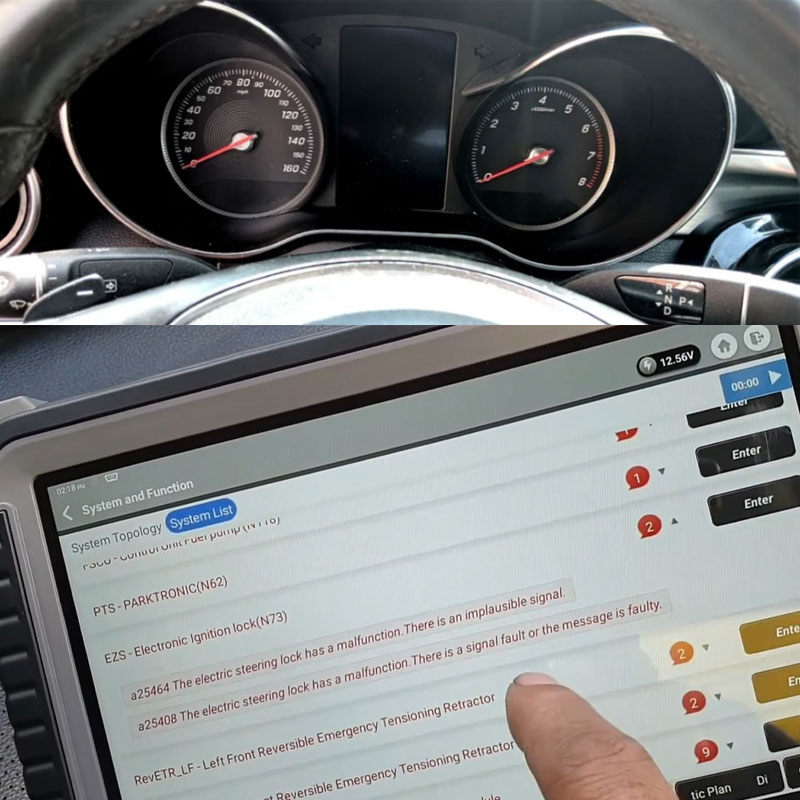
Experiencing a frustrating issue with your Mercedes-Benz where the steering wheel refuses to unlock? The Mercedes-Benz DTC A25407 signals a mechanical malfunction within your electronic steering lock system, a common concern in several popular models. Fear not, because at autoexplain.com, we’re dedicated to providing you with a comprehensive and friendly guide to understand, diagnose, and resolve this issue, ensuring you can get back on the road with confidence. Let’s delve into the intricacies of this fault code and explore the best solutions available, empowering you with the knowledge to make informed decisions for your cherished Mercedes-Benz.
Table of Contents
ToggleThe A25407 fault code in Mercedes-Benz vehicles signals an issue with the electric steering lock (ESL), specifically indicating a mechanical malfunction. This problem is common in several Mercedes models, including:
If left unresolved, this issue can leave your vehicle immobilized. This guide provides a detailed diagnosis and repair approach to restore your car’s functionality.
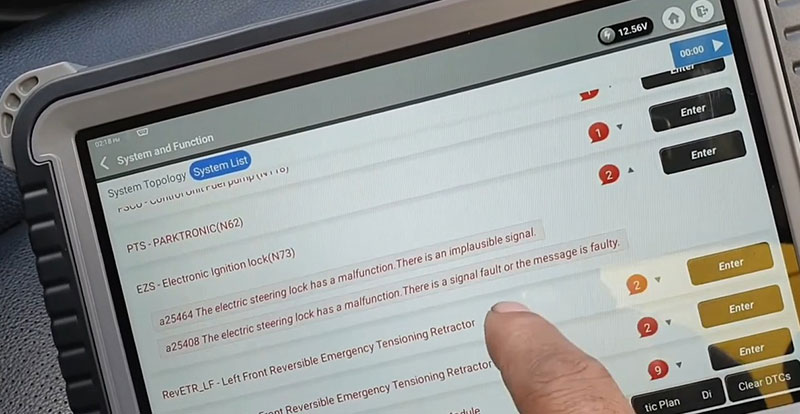
Unlike traditional mechanical locks, Mercedes-Benz vehicles utilize an electronic steering lock (ESL/ELV), which works in conjunction with:
When you insert the key, the steering lock should disengage automatically with an audible click, allowing the vehicle to start. However, the A25407 fault code indicates a failure in this system.
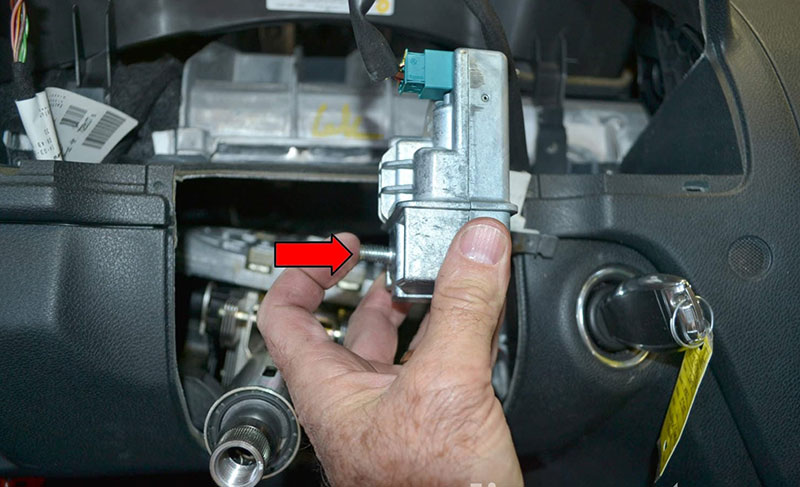
The electronic steering lock system comprises several interconnected components working in harmony:
Electronic Steering Lock Module (ESL/ELV): This is the core unit responsible for the physical locking and unlocking of the steering column. It houses an electric motor and intricate mechanical components. The A25407 fault code specifically points to a mechanical problem within this module.
Electronic Ignition Switch (EIS/EZS): This unit, where you insert your key, communicates with the ESL and the vehicle’s central computer system. It verifies the key’s authenticity and signals the ESL to either lock or unlock.
Control Electronics: These are integrated within the vehicle’s network and manage the communication between the EIS/EZS and the ESL.
Motor Mechanism: A small electric motor within the ESL module is responsible for physically moving the locking pin. The a25407 error often indicates a failure within this motor or its associated gears.
When you insert your Mercedes-Benz key into the ignition switch (EIS/EZS), a complex sequence of events occurs. The EIS/EZS reads the key’s transponder code and communicates this information to the vehicle’s central computer system for verification. If the key is authenticated, a signal is sent to the ESL module. Upon receiving this signal, the small motor within the ESL activates, retracting the locking pin from the steering column. This unlocking action is usually accompanied by a distinct clicking sound, and it allows the dashboard to illuminate, enabling the vehicle to start. The Mercedes fault code A25407, along with related codes like a25408, specifically indicates a detected mechanical failure preventing this smooth operation.
When the electronic steering lock system malfunctions and throws the A25407 code, several telltale symptoms can manifest. Recognizing these early warning signs can potentially save you from being stranded.
One of the most common indicators of an A25407 fault is a complete lack of response when you insert the key into the ignition. In a healthy system, you should hear a noticeable clicking sound emanating from the steering column as the ESL disengages. With an A25407 error, this reassuring click is often absent.
If the ESL fails to unlock the steering, the vehicle’s immobilizer system will remain active, preventing the engine from starting. Consequently, you’ll likely experience a “no crank” condition where the engine doesn’t even attempt to turn over when you try to start the car.
The electronic steering lock system is closely linked to the vehicle’s power distribution upon key insertion. If the ESL malfunctions due to a mechanical fault (A25407), it can disrupt the power supply to other systems, including the instrument cluster. As a result, the dashboard lights and instrument panel may fail to illuminate when you insert the key.
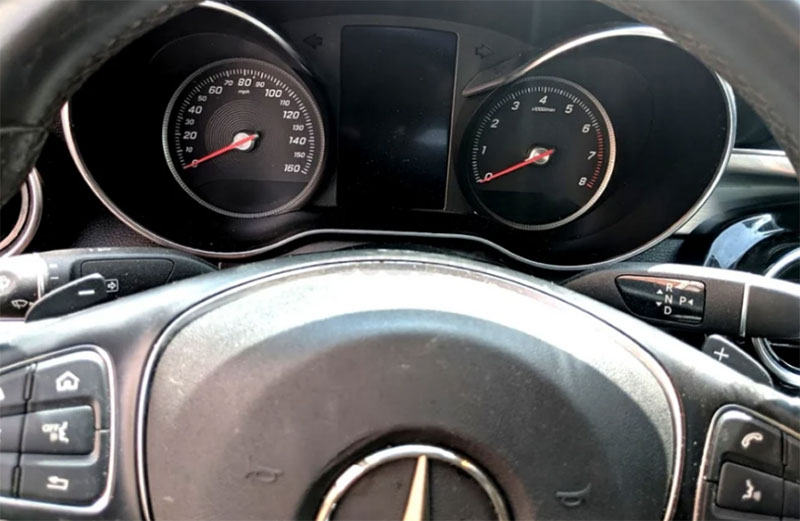
The primary function of the ESL is to lock the steering wheel when the vehicle is off, providing a security measure against theft. When the system fails with an A25407 code, the steering wheel may remain stubbornly locked, even after inserting the key.
In some cases, before a complete ESL failure occurs, you might notice that the steering lock becomes increasingly temperamental. You might need to insert and remove the key multiple times before the steering finally unlocks. This is a strong early warning sign of an impending A25407 fault.
When you suspect an A25407 fault, a systematic diagnostic approach is essential to confirm the issue and rule out other potential causes.
Heed the Warning Signs: Pay close attention to any instances where you’ve had trouble unlocking the steering or noticed unusual noises from the steering column. These subtle clues can indicate a developing problem with the ESL.
Confirm the Diagnostic Trouble Code: The most definitive step is to connect a Mercedes-Benz-compatible diagnostic scanner to your vehicle’s OBD-II port. This will allow you to read the stored fault codes. Verify the presence of the A25407 code and look for any related codes, such as A25408, A25409, A25464, or A22449, which often accompany a primary ESL fault.
Battery Health Check: A weak or failing vehicle battery can sometimes cause erratic electrical behavior that might trigger ESL-related issues. Use a multimeter to check your battery’s voltage. It should ideally be 12.4 volts or higher.
Listen for the Lock Mechanism: Carefully insert the key into the ignition and listen intently for the sound of the steering lock motor attempting to activate. In a failing ESL, this sound may be faint, absent, or sound strained or grinding.
Determine Intermittent vs. Complete Failure: Note whether the ESL functions sporadically or has failed completely. Intermittent operation often points towards a mechanical issue that is progressively worsening.
Once the A25407 fault code is confirmed, you have several options for resolving the electronic steering lock malfunction. Each option has its own implications for cost, time, and long-term reliability.
4.1 Option 1: Complete ESL Replacement (The Dealership Approach)
The traditional method favored by Mercedes-Benz dealerships involves replacing the entire electronic steering lock unit with a brand-new component.
Procedure: This typically entails ordering a new ESL unit specifically coded for your vehicle’s VIN (Vehicle Identification Number). A special programming key may also be required. The dealership technician will then physically remove the old ESL and install the new one, followed by programming it to communicate with your vehicle’s computer system.
Pros: Ensures the use of genuine Mercedes-Benz parts and often comes with a warranty from the dealership.
Cons: This is generally the most expensive option, often exceeding $1000, including parts and labor. It can also involve significant wait times for parts to be ordered and the programming to be completed, potentially leaving your vehicle out of service for several days or even a week or more.
4.2 Option 2: ESL Repair/Rebuild Service
A more cost-effective alternative to complete replacement is utilizing a specialized ESL repair or rebuild service. Several reputable companies offer this type of service.
Procedure: You would typically remove the faulty ESL module from your vehicle and send it to the repair service. Experienced technicians will then diagnose the precise mechanical failure within the unit, replace the faulty components (often with upgraded or more durable parts), and reprogram the ESL to function correctly with your vehicle.
Pros: Significantly less expensive than dealership replacement, with costs typically ranging from $138 to $550. It can also be a faster turnaround than waiting for a new unit and dealership scheduling. Many repair services use improved components, potentially leading to greater long-term reliability.
Cons: Requires you to remove and reinstall the ESL unit yourself or pay a local mechanic to do so. You’ll also be without your vehicle while the unit is being repaired and shipped. It’s crucial to choose a reputable repair service with positive reviews and a warranty on their work.
4.3 Option 3: ESL Bypass Emulator
Another permanent solution gaining popularity is the installation of an ESL bypass emulator.
Procedure: This involves replacing the mechanical ESL unit with an electronic emulator. This emulator is programmed to mimic the signals of a functioning ESL, effectively bypassing the need for the physical locking and unlocking mechanism.
Pros: This is often considered a permanent fix as it eliminates the mechanical components that are prone to failure. Once installed and programmed, there are no moving parts to wear out. The cost is generally around $289 for the emulator itself, making it a competitive option.
Cons: Requires careful and precise installation and programming specific to your vehicle’s VIN. This option might not be legal in all regions or may have implications for your vehicle’s insurance or resale value. It’s essential to research the regulations in your area and understand the potential consequences before opting for an emulator.
While the specific steps may vary slightly depending on your Mercedes-Benz model, here’s a general outline of the process involved in removing and reinstalling the ESL for either replacement or repair.
Please note: Working with automotive electronics, especially airbag systems, can be dangerous. If you are not comfortable with these procedures, it is highly recommended to seek professional assistance.
Disconnect the Battery: Begin by disconnecting the negative (-) battery terminal. This is crucial to prevent electrical shorts and potential damage to the vehicle’s electrical system. Wait at least 10 minutes before proceeding with any work near airbag components to allow any residual charge to dissipate. [Source: Automotive Service Excellence (ASE) guidelines]
Remove the Steering Wheel and Airbag:
Locate the airbag retaining bolts, typically accessible from the rear of the steering wheel (often requiring a 4mm Allen key). Carefully loosen these bolts. [Source: Haynes Repair Manual for Mercedes-Benz C-Class]
Gently detach the airbag module, taking care not to damage the electrical connectors. Disconnect the airbag electrical connectors. [Caution: Airbags are sensitive devices. Handle them with extreme care.]
Use the appropriate socket (usually a large Torx or multi-point socket) to remove the large center bolt securing the steering wheel to the steering column. Mark the position of the steering wheel on the shaft before removal to ensure proper alignment during reinstallation.
Carefully pull the steering wheel straight off the steering column.
Access the Steering Column Components:
Remove any necessary trim pieces and lower panels around the steering column to gain access to the ESL unit. These are typically held in place by screws or clips.
Remove the instrument cluster. This usually involves removing four Torx screws located around the cluster. Carefully disconnect all electrical connectors at the rear of the instrument cluster. [Source: Mercedes-Benz Workshop Manual]
Remove the ESL Unit:
Locate the ESL unit on the steering column. It’s usually a black or silver module attached with bolts or tamper-proof grub screws.
Disconnect all electrical connectors leading to the ESL unit.
Remove the retaining bolts or grub screws. If the ESL is locked, you may need to remove the entire steering column module to gain better access for removal. In some cases, drilling out the shear bolts may be necessary. [Source: Online Mercedes-Benz repair forums and technical guides]
Install the New or Repaired ESL:
Position the new or repaired ESL unit onto the steering column.
Secure it with the retaining bolts or new grub screws, applying the proper torque specifications (typically around 20Nm for steering column to cross member bolts). [Source: Mercedes-Benz Workshop Manual]
Reconnect all electrical connections to the ESL unit.
Reassemble Components: Reassemble the steering column trim, instrument cluster, steering wheel, and airbag in the reverse order of disassembly. Ensure all electrical connectors are securely attached. When reinstalling the airbag, ensure the retaining bolts are tightened to the specified torque.
Program the New ESL:
For dealer replacements, the new ESL will typically be programmed using a workshop key and Mercedes-Benz diagnostic equipment (like STAR Diagnosis or XENTRY).
For units from reputable repair services, the ESL often comes pre-programmed based on your VIN, making it a “plug and play” solution in many cases. However, some units might still require coding using diagnostic software.
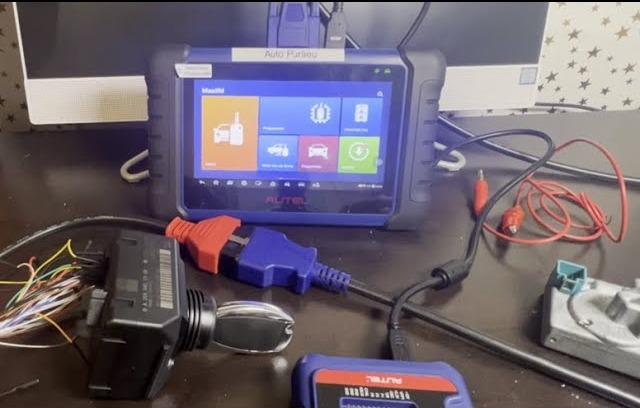
4. Verify Operation:
Carefully reconnect the negative battery terminal.
Insert the key into the ignition. You should now hear the distinct click of the steering lock disengaging.
Verify that the instrument cluster illuminates and that the vehicle starts normally.
While the electronic steering lock failure is often attributed to design weaknesses in certain Mercedes-Benz models, being aware of early warning signs and practicing gentle handling can potentially prolong the life of your ESL.
6.1 Warning Signs to Heed
Having to insert the key multiple times before the steering unlocks.
Unusual clicking, grinding, or whirring noises emanating from the steering column when inserting or removing the key.
A noticeable delay between inserting the key and the steering lock disengaging.
6.2 Limited Preventive Measures
Unfortunately, due to the inherent design of the original ESL units in the affected models, there are limited proactive measures to completely prevent failure. However, you can adopt certain habits:
Handle the Key and Ignition Gently: Avoid forceful twisting or sudden movements when inserting or removing the key, as this can put unnecessary stress on the delicate internal mechanisms of the ESL.
Address Early Warning Signs Promptly: If you notice any of the early warning signs mentioned above, don’t ignore them. Addressing the issue in its early stages can potentially prevent a complete and inconvenient failure.
Consider Proactive Replacement: If your vehicle falls within the affected model range (W204 C-Class, W212 E-Class, W207 E-Class Coupe, X204 GLK, and R172 SLK) and is approaching 7-10 years of age or has high mileage, you might consider a proactive replacement of the ESL with an updated or more robust unit as a preventative measure.
The A25407 fault code is a serious but fixable issue in many Mercedes-Benz vehicles. While dealership repairs are expensive and time-consuming, specialized repair services offer affordable alternatives that restore functionality faster and cheaper.
For a long-term solution, emulator bypasses eliminate the risk of future failures. Whether you choose ESL repair, replacement, or bypass, understanding the symptoms and repair options ensures you make an informed decision.
At AutoExplain, we specialize in Mercedes-Benz diagnostics, coding, and programming. If you’re facing the A25407 fault, our experts can diagnose, repair, or program your ESL system quickly and affordably.
📞 Contact us via WhatsApp: +1(936)2896695
🌐 Visit our website: AutoExplain for professional support!

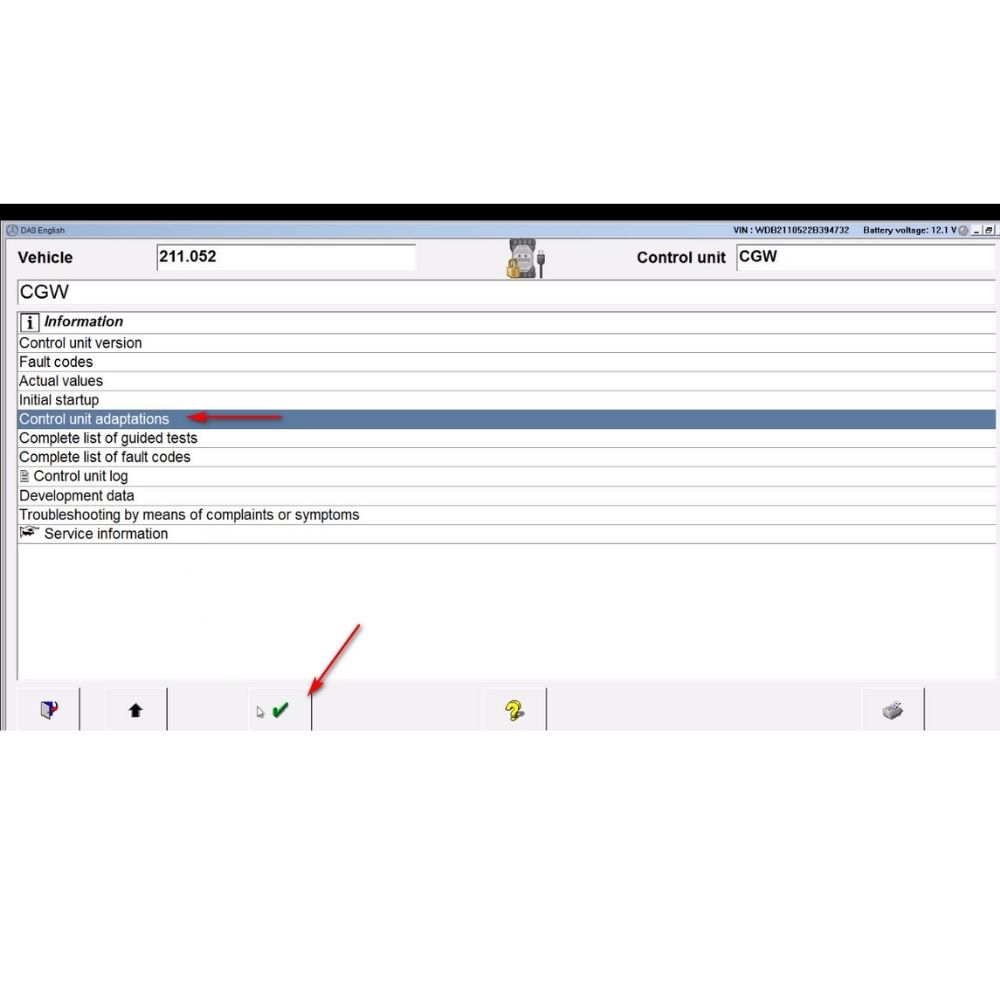
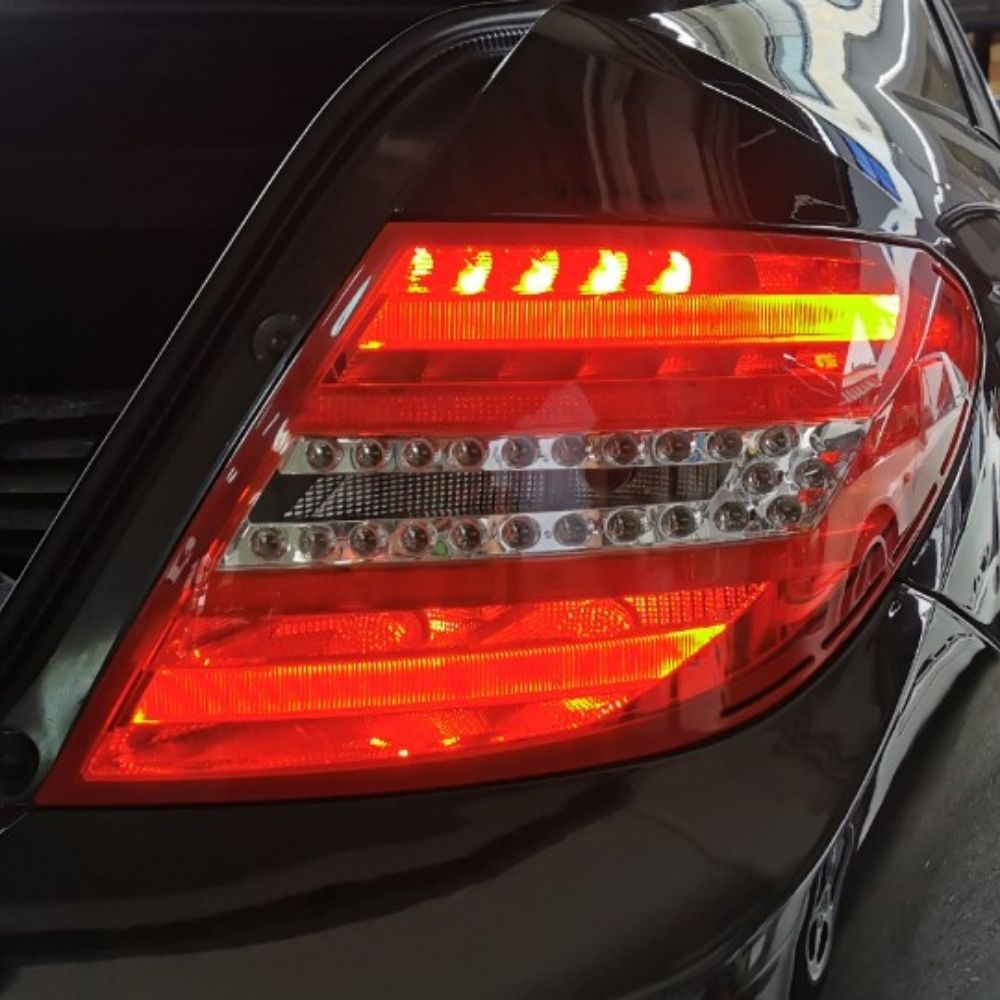
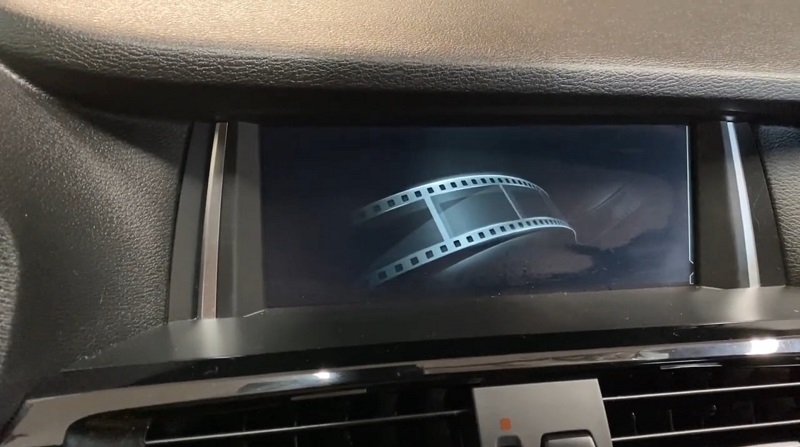

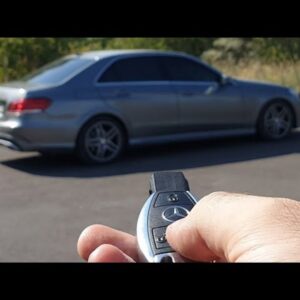
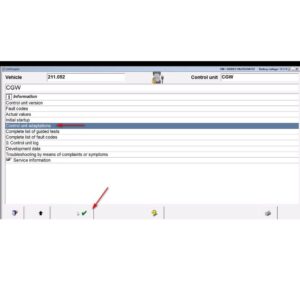
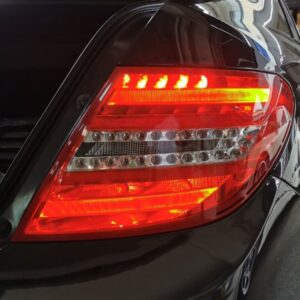
At AutoExplain, we provide automotive online repair service, auto repair tips, car repair manuals & document & training course to help mechanics of all experience levels—fix vehicles efficiently
AUTO EXPLAIN LLC
Employer Identification Number (EIN):
38-4349958
Whatsapp Us: +1(936)2896695
Gmail: [email protected]
Our Workshop: 1500 N Grant ST Sten Denver, Colorado, United States
Copyright 2025 © AutoExplain